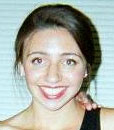Colgate students are sharing their experiences conducting research with faculty members on campus and in the field. This post is by art history major Hannah Bjornson ‘15, of Westport, Conn.
This summer I held a faculty-sponsored research position in the Department of Art and Art History. I assisted Professor Padma Kaimal in putting together her book about the eighth-century Kailasanatha temple complex in the southern Indian city of Kanchipuram.
I collected the necessary materials to update Professor Kaimal’s bibliography on the temple—specifically looking for responses to her 2005 article “Learning to See the Goddess,” where she explored the subject before diving deeper into research and writing.
In order to be as thorough as possible, I worked with several different research mediums, reference materials and databases, as well as other professionals in the field. I found it particularly exciting to be in contact with curators and specialists in Asian art at the British Library.
The Kailasanatha temple does not dictate a single experience for its viewers; rather, it dictates multiple paths for visitors. These paths contain visual forms that do not unfold in a linear narrative, but rather in a way that makes signs appear, connect, shift, and come together again. Instead of reaching the final goal of storytelling, the narrative is a step in a larger process of understanding this monument.
In addition to working with Professor Kaimal, I worked closely with Jesi Bender, the instructional design and web librarian. She helped me narrow down my search and explore all the available research tools as I looked for archaeological reports and literature that responded to Professor Kaimal’s article or elaborated further on the monument.
One of my favorite parts of the research process was reading the archaeological reports. Many of them were primary source materials from the 1800s and early 1900s. These documents were particularly exciting finds because they were precise accounts of the monument’s condition and the improvements, additions, or subtractions that were made during the time period.
Professor Kaimal traveled to India at the end of July to give a presentation on the monument. When I received an e-mail from her saying how helpful these reports were, I felt particularly proud of the research that I had done thus far.
Professor Kaimal is continuing to write her book this year, and my summer work will help her throughout the process. My summer research experience was gratifying because I was able to practice professional research skills and see my findings contribute tangible resources for my professor’s developing text.

